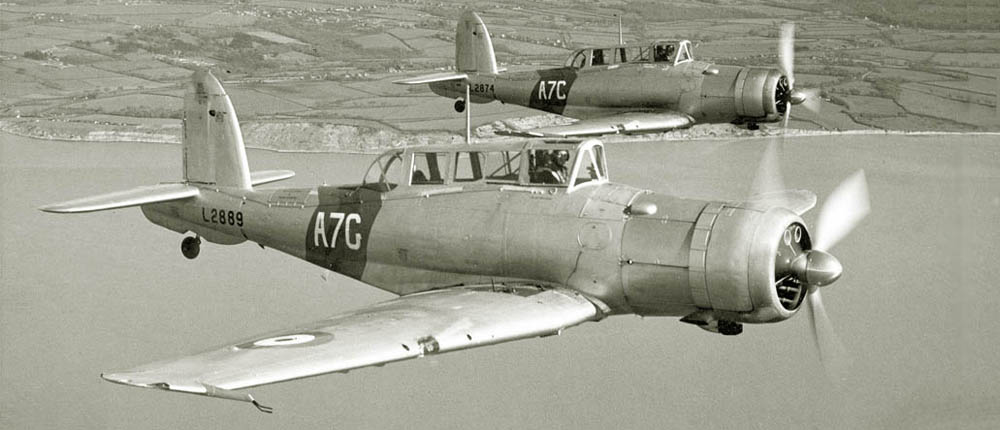
Aviation of World War II


 |
Aviation of World War II |


|
|
Soviet Union | Lend - Lease | Facts | Forum | Germany | Japan | R A F | U S A A F | Other | Photos |
|
|
B-24 SkuaShipborn Fighter-BomberBlackburn
The first copy of the new car, serial number K5178, with a Bristol Mercury IX air-cooled radial engine with 840 hp. first took off on February 9, 1937 A series of 190 aircraft of the future Skua was ordered by the Ministry of Aviation back in July 1936. Contract No. 534298/36 these aircraft were assigned serial numbers L2867 through L3056. The main change compared to prototypes was the installation of a new Bristol Perseus XII engine. This engine, despite its higher rated power than the Mercury, was inferior to the latter in almost all other indicators, but the replacement was forced: all Mercury went to Bristol Blenheim bombers and Gloster Gladiator fighters. With the new power plant, the aircraft became known as the Blackburn D.B.1A Skua II. |
|
|
B-25 RocThe Blackburn proposal was accepted to make a new aircraft based on the Skua by installing the standard four-gun Bolton Paul turret on the latter. The plane was named "Roc" - a giant mythological bird described in the Arabian tales "A Thousand and One Nights". In theory, the project looked perfect: minimal alterations, and the desired fighter is obtained, but in practice everything turned out to be not so smooth. Although the Skua glider was significantly lightened by removing the standard small arms and part of the bomber equipment, this savings was more than covered by the weight of the machine-gun "tower", so that in the end the aircraft was heavier by two centners. By keeping the same engine, this automatically meant that, according to flight data, the new aircraft would be inferior to the original model.
Combat use. September 25, 1939 during the air escort of the battleships "Nelson" and "Rodney" Lieutenant BS McEwen and petty officer B. M. Seymour (eng. BM Seymour) shot down the German flying boat Dornier Do-18 on the Skue plane belonging to the 803 squadron of the Ark Royal aircraft carrier. Thus, "Skue" became the first British aircraft to shoot down an enemy aircraft in World War II. On April 10, 1940, 15 Skue bombers from the 800th and 803rd bomber squadrons attacked the German light cruiser Konigsberg, damaged by Norwegian coastal batteries. As a result of the attack, "Konigsberg" received 3 direct hits from aerial bombs and sank. This was the first case in history of the sinking of a large warship by aircraft. In 1941, all "Skue" and "Roc" were removed from the units of the first line, decommissioned in 1945. Bibliography
May 25, 2021.
|
||||||||||||||||||||||||||||||||||||||||||||||||||||